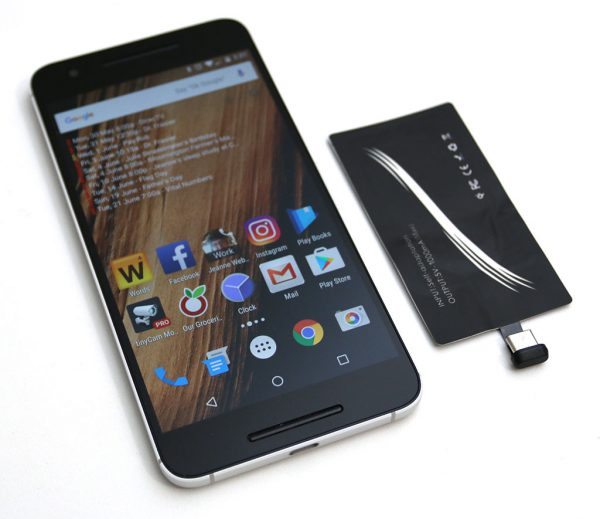
When I switched from the LG G3 to the Nexus 6P last fall, I knew I’d be giving up a couple features that I had been enjoying for years with the LG G3 and previous smartphones – a microSD card and most of all, wireless charging. With the 6P’s USB-C fast charging, the lack of wireless charging didn’t sting as much, but I still missed it – a lot. So I kept my hopes up that a solution would be offered at some point. Patience paid off when I recently stumbled upon the Astore wireless charging sticker for the 6P. I ordered one from Amazon, waited a couple weeks for it to arrive from China and have been using it ever since. Have all my wireless charging wishes come true? Let’s find out.
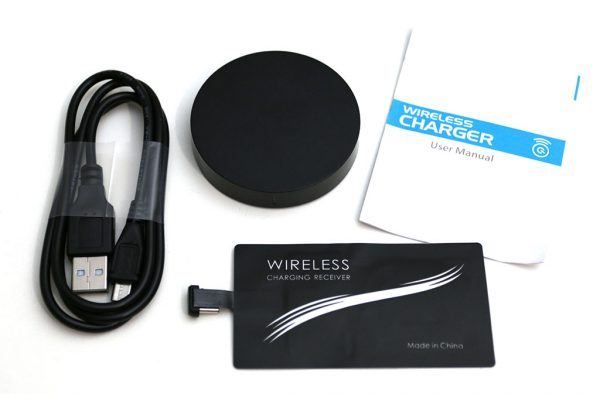
What’s in the box?
Qi Type-C sticker receiver
USB Qi charging pad
User manual
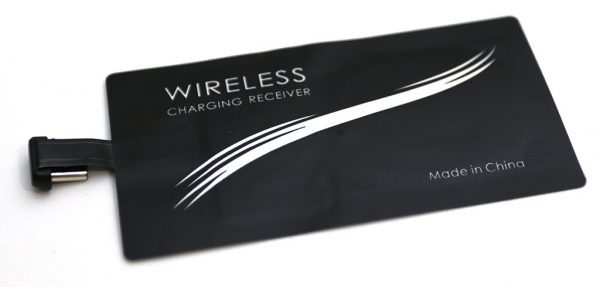
Since the shell of the Nexus 6P is sealed, adding Qi wireless charging to this phone was not as simple as adding it to the LG G3. With the G3, I only needed to remove the plastic cover on the back of the phone, place the wireless sticker between the cover and the battery, and put the back cover back on.
With the Nexus 6P, the wireless sticker has to plug into the USB-C connector on the phone and remain outside the phone.
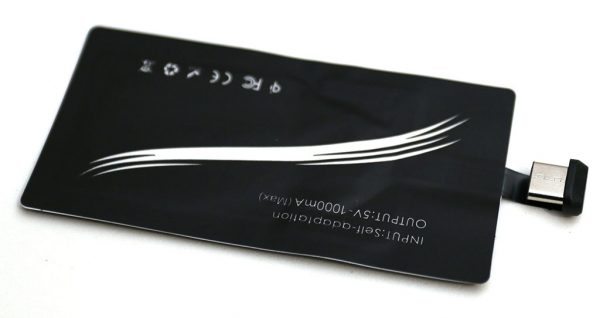
The sticker is flat and has a short flat cable with a USB-C connector on one end.
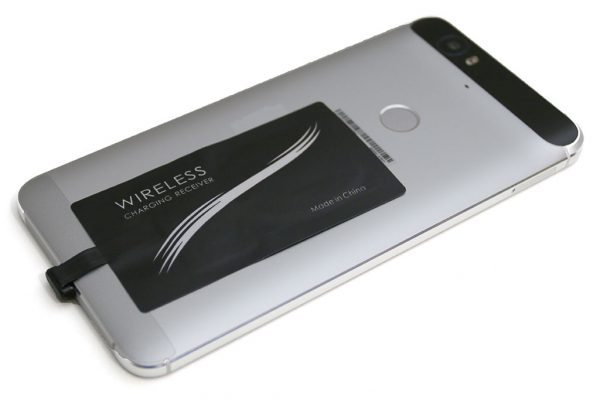
It plugs snugly into the charging port on the phone and lays flat against the back case.
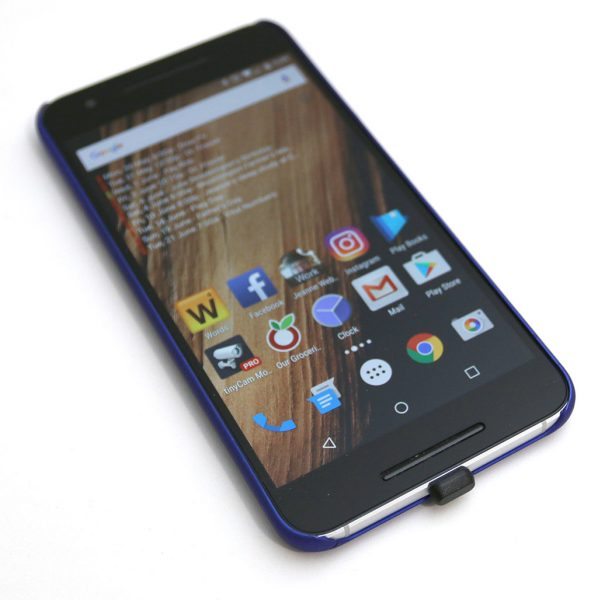
The thin case that I’ve been using for months was still able to fit the phone and keep the sticker from flopping around. The only telltale sign that something is different is the small nub of plastic that sticks out from the connector at the bottom of the phone.
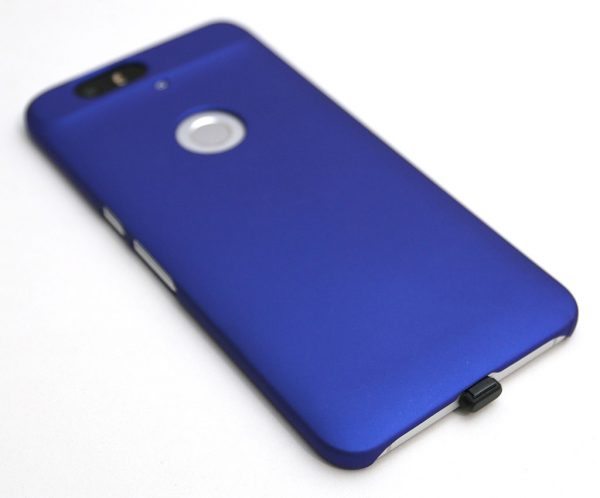
As far as looks, the nub doesn’t bother me that much. Do I wish it wasn’t there? Yes. But it’s a small price to pay to add wireless charging to the 6P. However, it can cause some issues depending on the wireless charging pad or dock that you plan to use.
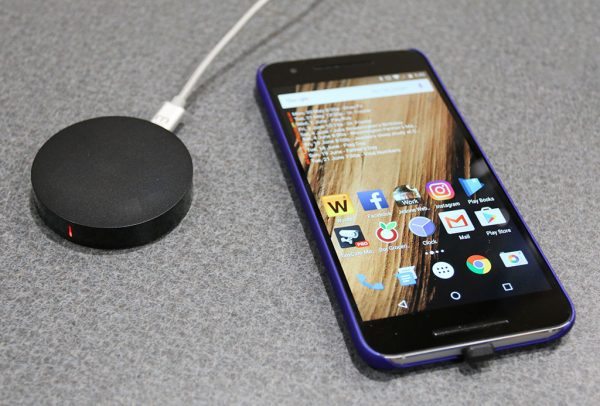
The sticker actually coms with a charging pad and a micro USB cable. It’s up to you to plug the charging pad into a USB AC adapter or a free USB port on your computer.
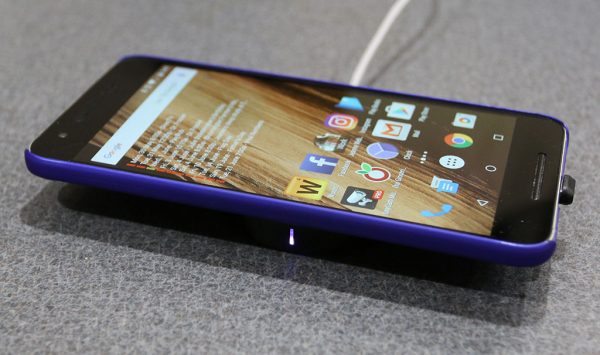
The charging pad has a small LED that glows red when it’s not charging and white when it is. This helps you know if you have the phone properly placed on the pad.
Once installed, I tested the wireless charging capability with the included charging pad, a Nokia DT-910 charging stand and a TYLT VU wireless charging dock. The included pad worked fine, the Nokia stand would charge for a few seconds, then disconnect for a few seconds and then reconnect again, over and over. The TYLT charging dock worked fine as long as I put the phone on it upside down because the small plastic nub caused alignment problems with the charging coil in the dock.
Charging wirelessly is obviously going to take longer than fast charging with a USB-C cable plugged into a fast charging adapter. But it’s so convenient to be able to just drop my phone on a charging dock or pad and have it top off my battery. No cables to plugin and a more organized / neater desk makes me happy. This was $10 well spent as far as I’m concerned.
The only downside to using an adapter like this one is that the USB-C port is now blocked – so it can’t be used for charging with a cable, OTG gadgets or anything else.
Updates 03/10/17
I used this for about a month and then removed it. Why? Because I started using Handshaker to quickly transfer images from my phone to my MacBook Pro. This app transfers through a USB connection and since this Qi receiver uses the USB port, I would need to remove the case and then the receiver’s plug from the USB-C port on the phone. I found this to be a little annoying, so I went back to charging through a USB-C cable.
Source: The sample for this review was purchased with my own funds. Please visit Amazon for more info and to order.



Gadgeteer Comment Policy - Please read before commenting
When I was ready to upgrade my Nexus 5 for this years new crop of Nexus phones, I was so bummed out by the lack of wireless charging that I opted to move to a Nexus 6 just to keep this feature. It upset me greatly. Google could have easily kept this with the Nexus 5X.
Doing the exact same thing moving from a Galaxy S5 to a Nexus 6. What I’m wondering is since there is a fast charging USB C port here why couldn’t they have incorporated the fast Qi charging spec like the S6 and S7 have?
Google learned, that the only reason why people preffered wireless charging over micro usb, was because users were annoyed by which way is up when connecting the power cord to their phones. It was annoyance, to say the least. The other reason was trade off. By design, they wanted a slimmer phone. Adding a wireless charger would make the phone thicker. They solved those problems with the Nexus 6P by including USB Type C with the added bonus of fast charging.
I have a similar pad for my iPhone and it works great. I have Qi chargers scattered around the house, office, and in my car so my phone is almost always topped up and ready to go.
What thin case what that by chance? Thanks!!
It’s this one: http://amzn.to/2nXk2za